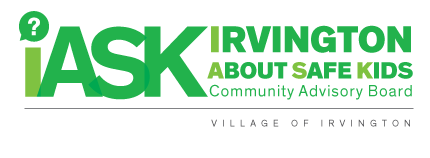In an effort to educate teenagers about the perils of marijuana use and its negative effects on brain development, Westchester County leaders on Thursday joined dozens of students, community advocates, health professionals and members of the Westchester Coalition for Drug and Alcohol Free Youth for an event celebrating young people who choose to abstain from the drug.
Called “Healthy Teen Brain Day,” the event included a rally that was held at 4:20 p.m. on 4/20 (April 20, 2017) and was hosted by Maria Fareri Children’s Hospital, which is a member of the Westchester Medical Center Health Network.
It included a giant inflatable brain exhibit, student testimonials and important health information about marijuana’s dangerous effects on developing minds. In recent years, April 20th has become known as a day when some people across the country gather to smoke marijuana and promote cannabis culture; “Healthy Teen Brain Day” is part of the county’s ongoing efforts of reclaiming the day by celebrating those who choose not to use the drug while also highlighting its potential dangers.
“Far too many of our young people don’t believe marijuana is harmful and are unaware of its dangers. It is important that we help our children, students and impressionable teenagers make smart and healthy decisions that will affect them today and for years to come,” County Executive Robert P. Astorino said of the annual event. “It’s gratifying to see so many adolescents in Westchester County choosing not to smoke marijuana and raising awareness among their peers about its associated risks.”
“Healthy Teen Brain Day” is one of many programs held throughout Westchester County where municipalities, coalitions and student groups joined forces to raise awareness about the risks associated with adolescent marijuana use. While today’s teens are less likely to view marijuana use as harmful, scientific research from the American College of Pediatricians provides evidence that marijuana is especially detrimental to an adolescent’s brain.
“The American Academy of Pediatrics recently issued guidelines for parents and physicians that include telling teens that marijuana is not a benign drug. It can cause abnormal brain development and impact memory, concentration and executive functioning skills,” according to Marcia Nackenson, MD, Interim Chief of Adolescent Medicine, Maria Fareri Children’s Hospital, which is a member of the Westchester Medical Center Health Network.
Westchester County Commissioner of Mental Health, Dr. Mark Herceg, noted that regular marijuana use actually changes a person’s brain structure. “During teen years, it’s the absolute worst time to use cannabis because the mind-altering drug can disrupt brain development,” said Herceg. “A growing number of studies show regular marijuana use, once a week or more, actually changes the structure of the teenage brain, specifically in areas dealing with memory and problem solving. This can affect cognition and academic performance. If we look at actual grades, chronic marijuana-using teens generally have lower grade point averages than their peers that don’t smoke pot.”
The Westchester Coalition for Drug and Alcohol Free Youth is an umbrella coalition whose members represent 30 local community anti-drug coalitions throughout the county. The goal of the program is to reduce substance abuse among youth in Westchester and, over time, among adults by addressing the factors that increase the risk of substance abuse and by promoting behaviours that minimize the risk of substance abuse.
“Youth look to us for information and support and that’s precisely what we are doing with events like ‘Healthy Teen Brain Day,’ ” said Patricia Tomassi, director of the Westchester Coalition for Drug and Alcohol Free Youth. “It is more important than ever that we continue to educate our youth that choosing not to use marijuana is a brain-healthy decision.”
Alliyah Steele, a student from Peekskill, spoke of why she doesn’t use marijuana: “The human brain is really the most amazing app,” she said. “Its supernatural abilities make it the most amazing computer, but it may also be the least respected. Just like any computer, we must take care of it for it to work properly. That’s why I say, ‘to have a healthy brain, you should abstain’.”
The event was sponsored by Ardsley SAYF Coalition, Bedford, Lewisboro, Pound Ridge DAPC, Blind Brook Community Coalition, Cortlandt Community Coalition, Croton Community Coalition, Dobbs Ferry Youth Services Council, Hastings Community Coalition, Irvington ASK-CAB, Maria Fareri Children’s Hospital, New Rochelle FOCUS, Peekskill Agencies Together, New Castle United for Youth, Pelham PACT, Rye ACT, Scarsdale Task Force on Drugs and Alcohol, Student Assistance Services, Westchester Coalition for Drug and Alcohol Free Youth, Westchester County Youth Bureau, Westchester Department of Community Mental Health, White Plains Cares Coalition, Yonkers Coalition for Youth, Yorktown ASK.
Source: Westchestergov.com















 As kids get older and alcohol and drugs enter the picture, parents are faced with a unique set of challenges. They can simply sit back and hope their kids will “get through it,” or they can take an active role in learning about alcohol and drugs – and helping their kids to do the same. Parents can be a primary source of positive and reliable information. In fact, research has shown that kids who have conversations with their parents and learn a lot about the dangers of alcohol and drug use are 50% less likely to use these substances than those who don’t have such conversations.
As kids get older and alcohol and drugs enter the picture, parents are faced with a unique set of challenges. They can simply sit back and hope their kids will “get through it,” or they can take an active role in learning about alcohol and drugs – and helping their kids to do the same. Parents can be a primary source of positive and reliable information. In fact, research has shown that kids who have conversations with their parents and learn a lot about the dangers of alcohol and drug use are 50% less likely to use these substances than those who don’t have such conversations.


